Planning a two-week trip to Portugal without a car might seem daunting, but it’s easier than you think! With reliable public transportation and compact cities, you can experience Portugal’s highlights stress-free. This itinerary covers everything from vibrant Lisbon to the sunny Algarve, linking you to detailed posts about each destination packed with tips on what to see, where to eat, and how to get around.
Dreaming of a two-week adventure in Portugal but don’t want to deal with the hassle of renting a car? You’re in luck! Portugal’s excellent public transportation system makes it incredibly easy to explore the country’s rich history, vibrant cities, and charming small towns by train and bus. Whether you’re wandering the cobblestone streets of Lisbon or savoring fresh seafood along the Algarve, this itinerary is designed to show you the best of Portugal—all without getting behind the wheel.
Over the next two weeks, you’ll hit all the must-see highlights like Lisbon, Porto, and Sintra, but this journey also gives you time to slow down and soak in the beauty of smaller towns. With efficient trains connecting the major cities and regional buses taking you to those tucked-away treasures, you’ll enjoy a stress-free and eco-friendly way to experience the country. Plus, traveling without a car means you can fully relax and enjoy the views—no GPS needed!
This car-free itinerary is perfect for first-time visitors looking for a mix of culture, nature, and delicious food. It’s also budget-friendly, ideal for solo travelers or couples, and packed with tips to make the most of Portugal’s public transportation. So grab your backpack, comfortable shoes, and a sense of adventure—Portugal is waiting for you!
Here’s my complete itinerary to visit Portugal, without a car!
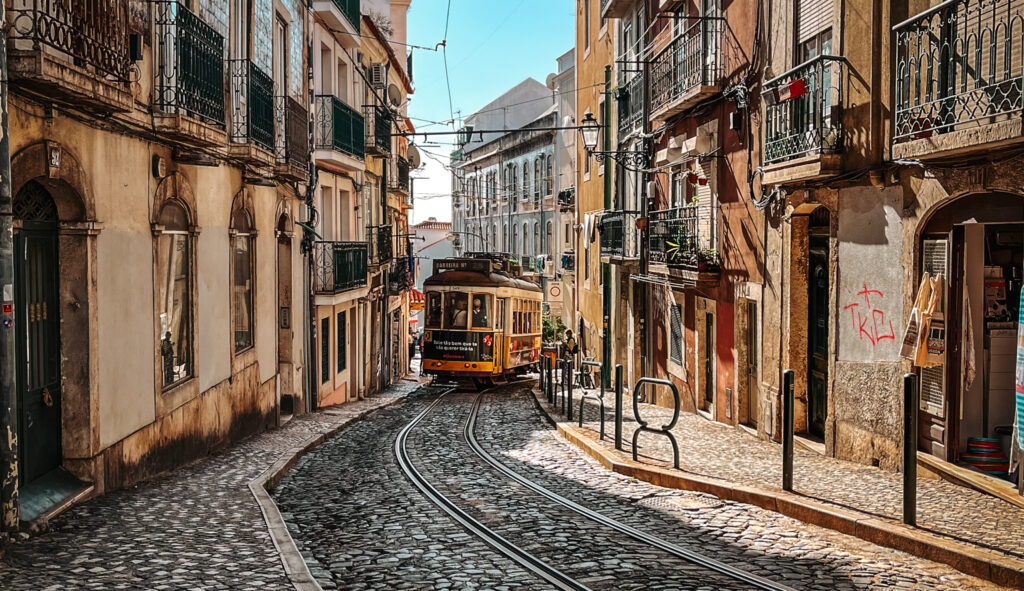
What you need to know before visiting Portugal without a car!
What is the best time to visit Portugal?
I’ve visited Portugal at many different times of the year, and it’s a destination that always feels magical. That said, my favorite periods to explore are in April and October. During these months, the summer crowds and intense heat have faded, but the weather is still mild enough to enjoy the outdoors with just a light jacket. The only trade-off is the occasional unpredictable weather; for example, I’ve experienced short showers in late October and early November.
If you’re in the planning phase and have some flexibility, I’d highly recommend visiting Portugal in early spring (April–May) or early autumn (September–October). These shoulder seasons offer the perfect balance of pleasant weather and fewer tourists, making it easier to enjoy the country’s vibrant cities and picturesque towns without long waits or peak-season prices. Portugal always attracts visitors, but during these months, it’s at its most welcoming.
If summer is your only option (late June through August), be prepared for larger crowds, higher accommodation costs, and busier attractions, especially in hotspots like Lisbon and the Algarve. While summer is still a fantastic time to visit, knowing what to expect will help you plan and enjoy your trip without surprises.
How to get to Portugal?
Portugal is well-connected to the rest of the world, making it easy to plan your arrival no matter where you’re traveling from. The country has three main international airports: Lisbon Airport (Humberto Delgado Airport), Porto Airport (Francisco Sá Carneiro Airport), and Faro Airport. Each serves a different region, giving you flexible options depending on your itinerary.
- Lisbon Airport (LIS):
Lisbon’s airport is the largest and busiest in Portugal, handling flights from Europe, North America, and beyond. Located just 7 km (4 miles) from the city center, it’s incredibly convenient for travelers starting their journey in the capital. From the airport, you can easily reach downtown Lisbon in about 20 minutes by metro, bus, or taxi. The metro is the quickest and most affordable option, while taxis or rideshares provide door-to-door service for a slightly higher price. - Porto Airport (OPO):
Porto’s airport serves northern Portugal and is a fantastic option if you plan to explore Porto, the Douro Valley, or nearby regions. It’s located about 11 km (7 miles) from the city center and is well-connected by public transportation. The metro’s purple line (Linha Violeta) links the airport to central Porto in just 30 minutes. You’ll also find buses and taxis readily available outside the terminal. - Faro Airport (FAO):
Faro Airport is the gateway to the Algarve, Portugal’s stunning southern coastline. While smaller than Lisbon and Porto, this airport is well-equipped and handles many flights from across Europe, and even North America, especially during the summer. It’s located about 4 km (2.5 miles) from Faro city center. You can reach the town via shuttle bus, taxi, or rideshare. For those heading straight to beach destinations, many hotels offer private transfers from the airport.
During my visit, I landed at the Lisbon Airport. However, any of these would make good starter point to your visit if you switch a few things around.
Is two weeks in Portugal long enough?
Absolutely! Two weeks in Portugal is the perfect amount of time to experience the country’s highlights while also savoring its relaxed pace. Portugal may be small compared to some other European destinations, but it’s packed with incredible diversity—from bustling cities like Lisbon and Porto to charming small towns and breathtaking coastal and mountain landscapes. With 14 days, you’ll have enough time to explore the major cities, visit a few off-the-beaten-path gems, and soak in the local culture without feeling rushed.
That said, it’s impossible to see everything in one trip—Portugal is a country that keeps drawing visitors back for more. Two weeks will give you a fantastic introduction and plenty of memories, but don’t be surprised if you leave already planning your next visit to dive deeper into this beautiful destination.
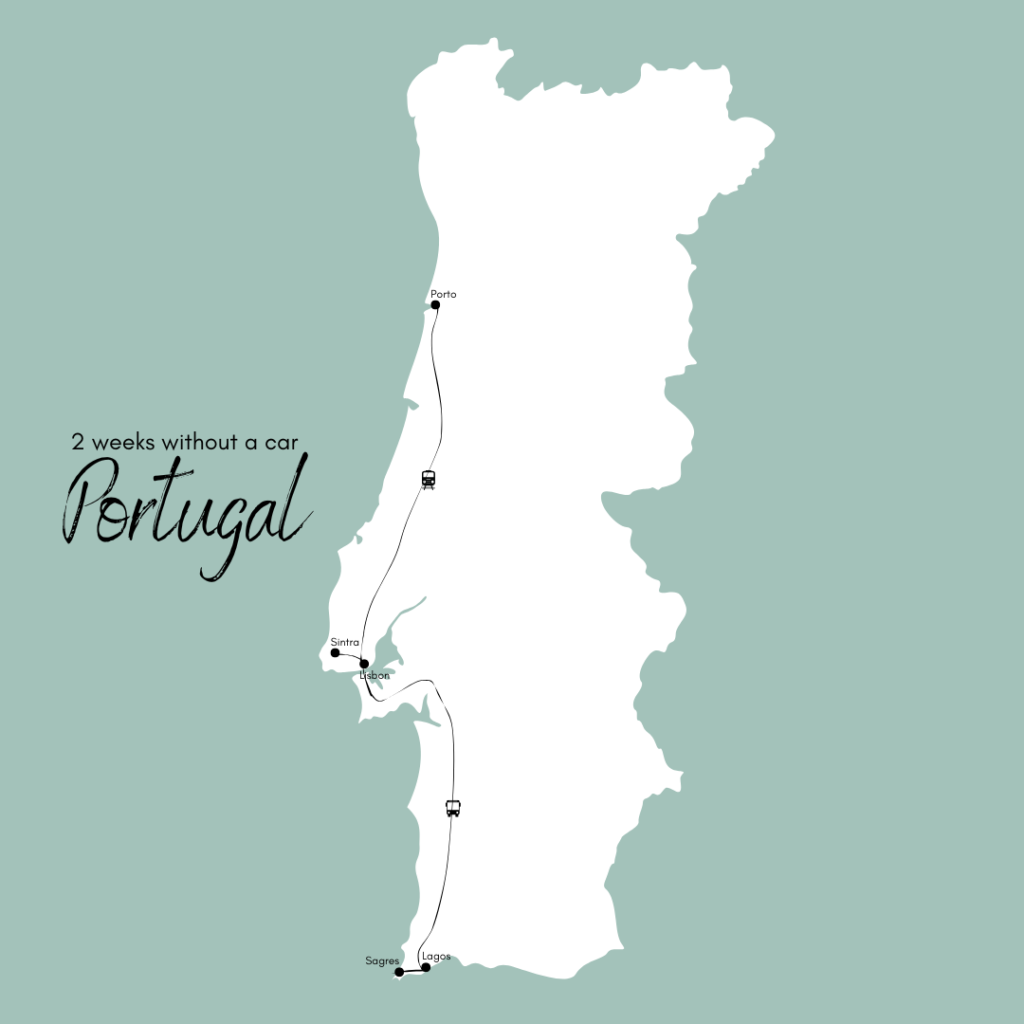
2-Week in Portugal : A complete itinerary
Day 1-3: Lisbon by Foot and Tram
Your adventure begins in Lisbon, Portugal’s enchanting capital. This vibrant city offers a perfect mix of history, culture, and modern charm. With three days, you’ll have enough time to explore its winding streets, iconic landmarks, and scenic viewpoints. To help you make the most of your stay, I’ve written detailed guides packed with tips and recommendations:
- 14 Things to Know Before Visiting Lisbon
Get off to a smooth start with this essential guide covering everything from public transportation tips to cultural quirks and some fun historical facts. Read it here. - 11 Amazing Things to Do in Lisbon
From exploring Alfama’s cobblestone streets to catching stunning sunsets at Lisbon’s famous miradouros, this guide highlights all the must-see spots and experiences. Discover the top things to do. - Where to Stay in Lisbon
Choosing the right base is key to enjoying Lisbon to the fullest. Whether you prefer historic neighborhoods like Alfama or lively areas like Bairro Alto, I’ve detailed the best places to stay for every traveler. Find your perfect stay. - 5 Tips to Ride Tram 28
No trip to Lisbon is complete without hopping on the iconic Tram 28! Learn how to avoid the crowds, ride like a local, and enjoy the most scenic routes. Get the full tips here. - How to Make the Best of Your Visit to Belém
Just a short tram or bus ride away, Belém is home to incredible sights like Jerónimos Monastery, Belém Tower, and the famous Pastéis de Belém. This guide will help you maximize your time in this historic district. Plan your visit.
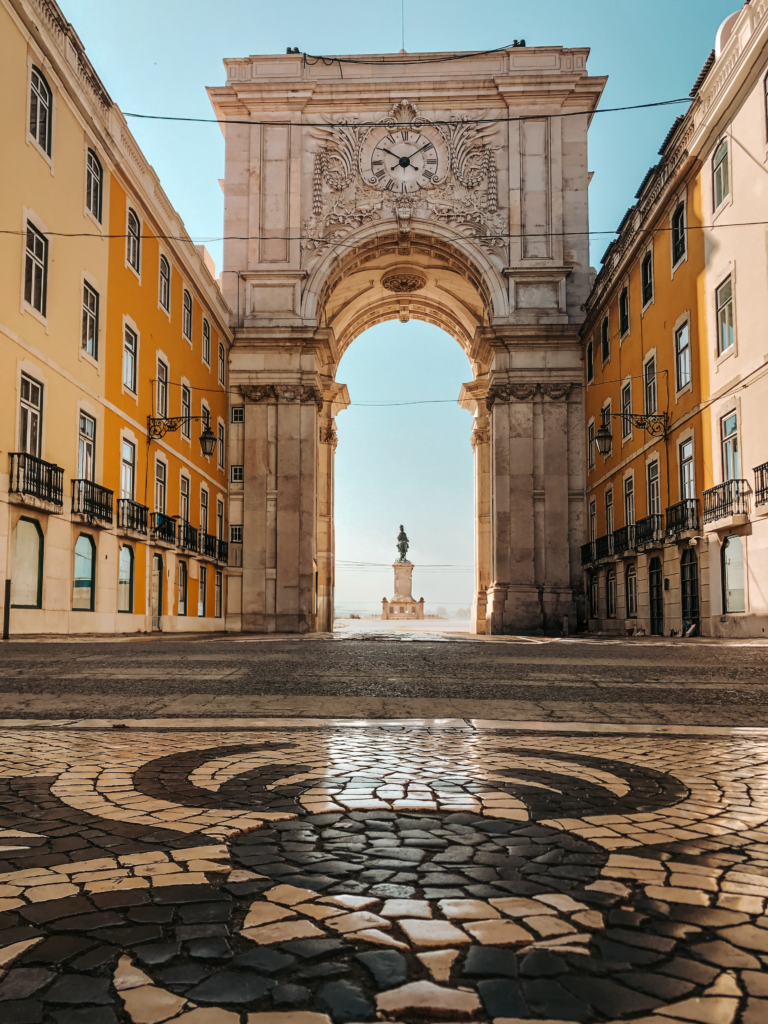
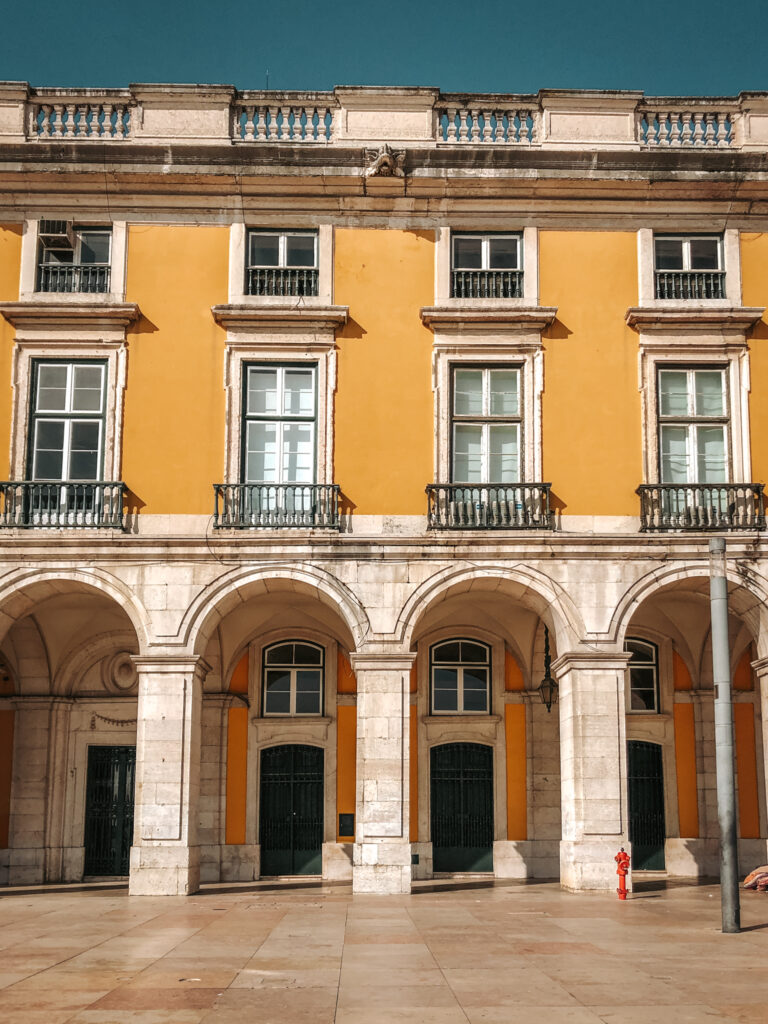
Day 4 : Sintra by train
On your fourth day, take a scenic day-trip from Lisbon to Sintra, a magical town just 40 minutes away by train. Known for its fairytale-like castles and lush gardens, Sintra is a must-visit destination for any traveler. Whether you’re a history lover or simply looking for stunning views, Sintra has something to offer.
Start by visiting the iconic Pena Palace, with its vibrant colors and panoramic views, followed by the romantic Quinta da Regaleira with its mysterious wells and beautiful gardens. Don’t miss Moorish Castle, offering a glimpse into Sintra’s history with its medieval walls and breathtaking vistas.
How to get to Sintra?
From Lisbon, the easiest way to get to Sintra is by train.
Located around 40 minutes from Lisbon, the town of Sintra is easily accessible by train. There are two train lines that link Lisbon to Sintra:
- The first one leaves from Rossio Train station, in the center of Lisbon;
- The second leaves from Estação do Oriente, the train station nearest to the airport.
The price of a train ticket is €4,80 and include the trip to and from Sintra.
Trains start early in the morning and last until late in the night. There are 3 trains per hour leaving from each station.
To make the most of your trip and fit all these incredible sights into one day, check out my detailed guide:
- 1 Day, 3 Castles: How to Make the Best of Your Day-Trip to Sintra
This post provides everything you need to know about visiting the castles efficiently, including tips on getting around, what to see first, and how to avoid the crowds.
With the help of my guide, you’ll be able to explore Sintra’s stunning castles and magical spots in a single day, making it one of the highlights of your trip.
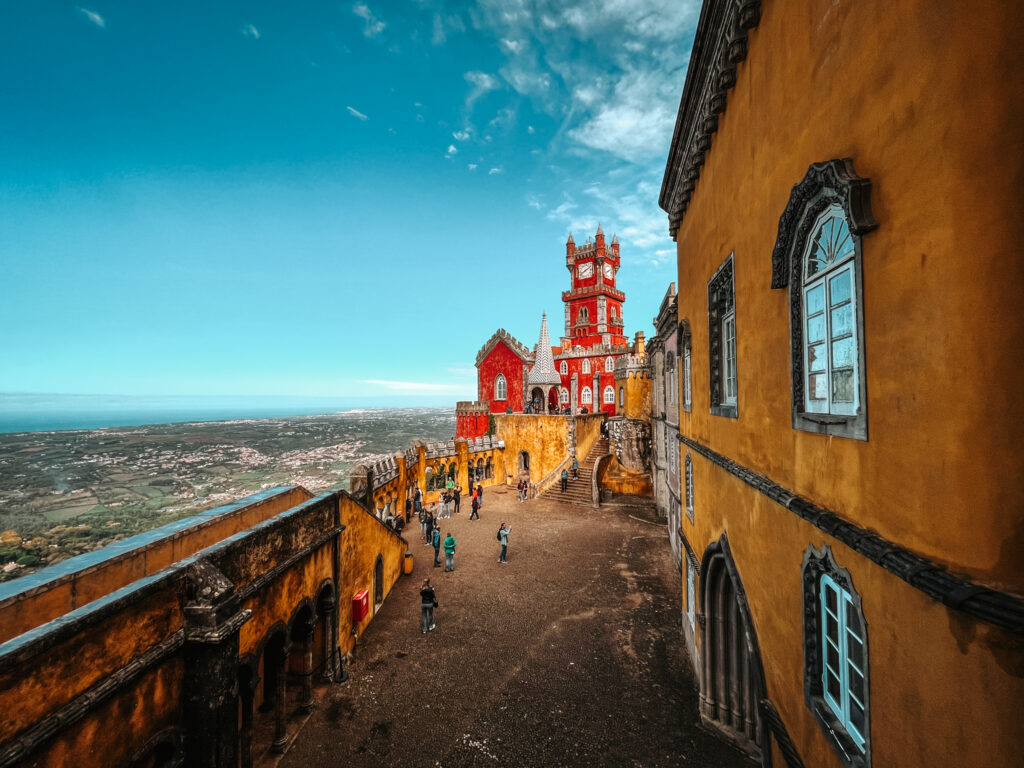
Day 5 – 7 : Porto
After Lisbon, take a train to Porto, a charming city in northern Portugal known for its riverside views, rich history, and, of course, port wine. Spend three days exploring this vibrant city, where every corner is packed with culture, stunning architecture, and plenty of delicious food.
How to get to Porto?
From Lisbon, taking the train to Porto is the most convenient. It’s important to note that there are two main train stations in Lisbon :
- The first one is Sao Bento Station in the city center
- The second is Campanha Station, which is where the trains to and from Lisbon can be taken.
Typical train times / costs from the following popular destinations are:
- Lisbon/ 3 hours / €30
- Coimbra / 1.15 / €15
- Faro / 6 hours / €60
From Sao Bento Station, you’re a short walk from the the main attractions in the center of Porto. The Campanha Station however is a bit farther out : it takes around 9 minutes by taxi or by metro to get to the city center.
To book train tickets in advance, check out Omio.
To help you navigate Porto and make the most of your stay, check out these essential guides:
- 12 Things to Know Before Visiting Porto
Porto is a city full of surprises, and there are a few things you’ll want to know before you go. From transportation tips to the best time to visit, this guide will ensure you’re well-prepared for your trip. Check out the guide here. - 11 Amazing Things to Do in Porto
From visiting the historic Dom Luís I Bridge to taking a boat tour along the Douro River, this list covers all the must-see attractions and unique experiences Porto has to offer. Get the full list here.
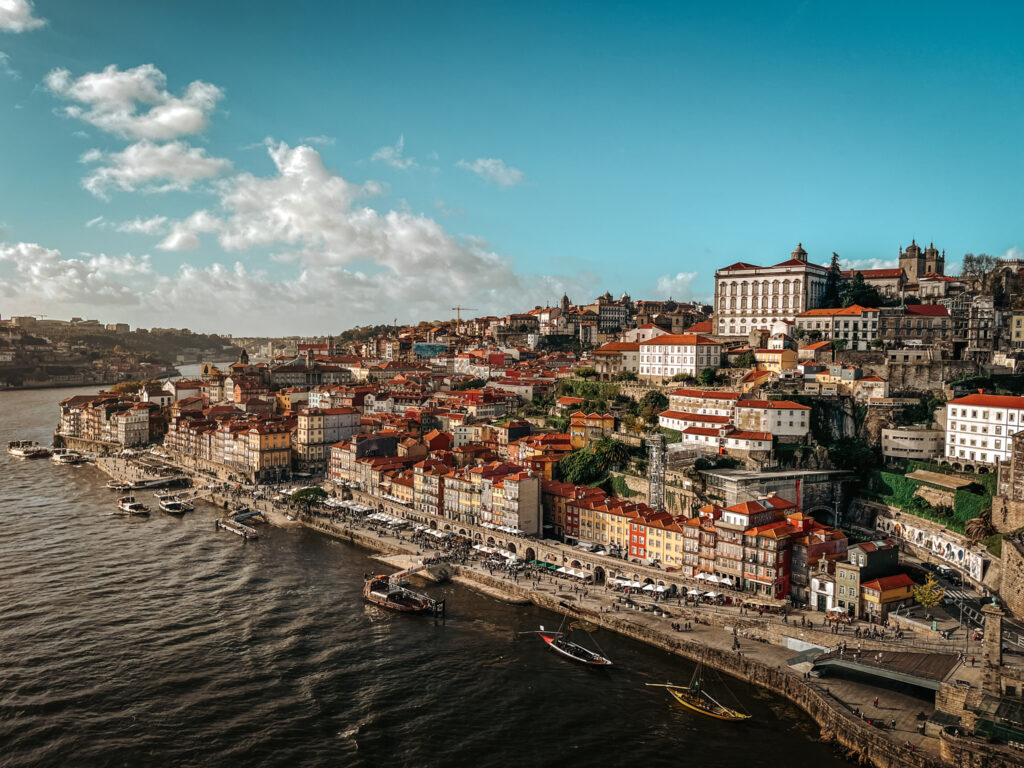
Day 8 – 11 : Lagos (Algarves)
After exploring Porto, head south to Lagos in the Algarve region, known for its stunning coastline, golden beaches, and vibrant atmosphere. Whether you’re relaxing by the sea or exploring the cliffs of Ponta da Piedade, Lagos offers a perfect mix of relaxation and adventure.
How to get to Lagos?
From Porto, you’ll first have to make your way by train to Lisbon. From there, you’ll catch a bus to Lagos .Traveling from Lisbon to Lagos is straightforward, and FlixBus offers a convenient and affordable way to make the journey.
The bus ride takes about 4 to 4.5 hours. FlixBus is known for being an efficient, budget-friendly option, with comfortable seats and free Wi-Fi on board.
- The bus leaves from the Lisboa Oriente Train Station.
- In Lagos it arrives at the Terminal Rodoviário in the city center.
Prices typically range from €12-€18 one-way, depending on how early you book and availability.
FlixBus operates buses between Lisbon and Lagos throughout the day, with departures typically every 1-2 hours, making it easy to find a time that fits your schedule.
Once you arrive in Lagos, getting around without a car is manageable. Local buses connect the town with popular beaches and attractions, and taxis or Uber are readily available for more convenient transport. Most of the key sights, including Ponta da Piedade, the beaches, and the old town, are also walkable, making it a perfect destination for those not traveling by car.
While in Lagos, be sure to explore its natural beauty and historic sites. Check out these guides to help plan your trip:
- 9 Best Things to Do in Lagos
From the iconic Ponta da Piedade to the charming streets of the old town, this post highlights the must-see experiences in Lagos. Read the full list here. - Where to Stay in Lagos
Lagos offers a variety of accommodation options, from cozy guesthouses to luxury resorts with stunning views of the coastline. Find the best places to stay with my guide. Check it out here. - Short Guide to Ponta da Piedade
Ponta da Piedade is one of Lagos’ most famous landmarks, with breathtaking cliffs, caves, and crystal-clear waters. My guide will help you make the most of your visit to this spectacular location. Explore Ponta da Piedade here.

Public Transportation in the Algarve
FromThe Algarve region has a relatively good public transportation system, especially in larger towns like Faro, Lagos, Albufeira, and Portimão, where you’ll find local buses and trains that connect the main towns and cities. However, the further you venture into more remote areas or coastal villages, the less frequent the transportation options become.
Taxis and Ride-sharing: Uber and taxi services are available in larger towns, making it easy to get around when buses or trains are less convenient. This can be a good option for shorter distances or when you’re traveling to places that aren’t easily accessible by public transportation.
Buses: The main bus network in the Algarve is run by Eva Transportes and connects many towns and cities. It’s a cheap option for getting from one town to another, but schedules can be limited, especially on weekends or during off-peak seasons. Some smaller towns might not be as well-served by buses, so it’s essential to plan ahead.
Trains: The Algarve Railway is a popular option for getting from Faro to Lagos, Albufeira, and Portimão. Trains are relatively frequent and affordable, though not all towns are accessible by train. The train stations are often located slightly outside of town centers, so you might still need to take a short taxi ride to reach your final destination.
Day 12 : Sagres
On day 12, take a scenic day trip to Sagres, a charming town located at the southwestern tip of Portugal. Known for its dramatic coastline, rugged cliffs, and rich maritime history, Sagres is a must-see for those exploring the Algarve.
How to get to Sagres?
Traveling from Lagos to Sagres by bus is straightforward and affordable. Eva Transportes operates a regular bus service that connects both towns, making it easy for you to explore Sagres without the hassle of driving. The bus journey takes about 30 to 45 minutes, offering a stress-free way to enjoy the views of the Algarve’s coastline as you travel.
For more detailed information about how to get there, including schedules, prices, and tips on booking tickets, check out my full guide on How to Get from Lagos to Sagres by Bus here.
Once in Sagres, be sure to visit the iconic Sagres Fortress, where you can walk along the cliff-top walls and enjoy panoramic views of the Atlantic. If you have time don’t miss Cape St. Vincent, the southwesternmost point of Europe, known for its stunning sunsets and dramatic sea views. However, you might need to plan a second day to visit Cape St Vincent because the bus schedule makes it difficult to visit both Sagres and Cape St. Vincent in one day. I explain why here.

Day 13-14 : Return to Lisbon and fly back home
On your final days in Portugal, make your way back to Lisbon for your return flight home. Depending on when your flights leaves from Lisbon, you will have to give yourself enough time to travel back from Lagos to Lisbon. Best case scenario, you have some extra time in Lisbon!
How to get back to Lisbon?
To return to Lisbon, you can take a FlixBus or train, with both options providing a comfortable and affordable way to travel. The bus journey takes around 4 to 4.5 hours, while the train may take a bit longer depending on connections. Be sure to book your tickets in advance to secure your preferred departure time.
Once you arrive in Lisbon, depending on your flight time, you might have a few hours to grab a last bite to eat or do some final sightseeing before heading to the airport.
How to get to the Lisbon Airport?
If you fly out of Lisbon airport, then you have two options to reach the airport:
1. The metro service (find a metro map here) is the cheapest and most convenient. Departure are around every six minutes, tickets cost €1.50, and it takes 20 minutes to arrive to the airport. Buy tickets from the machines before you board.
2. You can also take a taxi. Depending on traffic, the journey to the city centre is quick, costing between 10 and 15 euros, including luggage fees. If you choose this mean of transportation, make sure the meter is turned on at the beginning of the journey and always ask for a receipt/invoice.
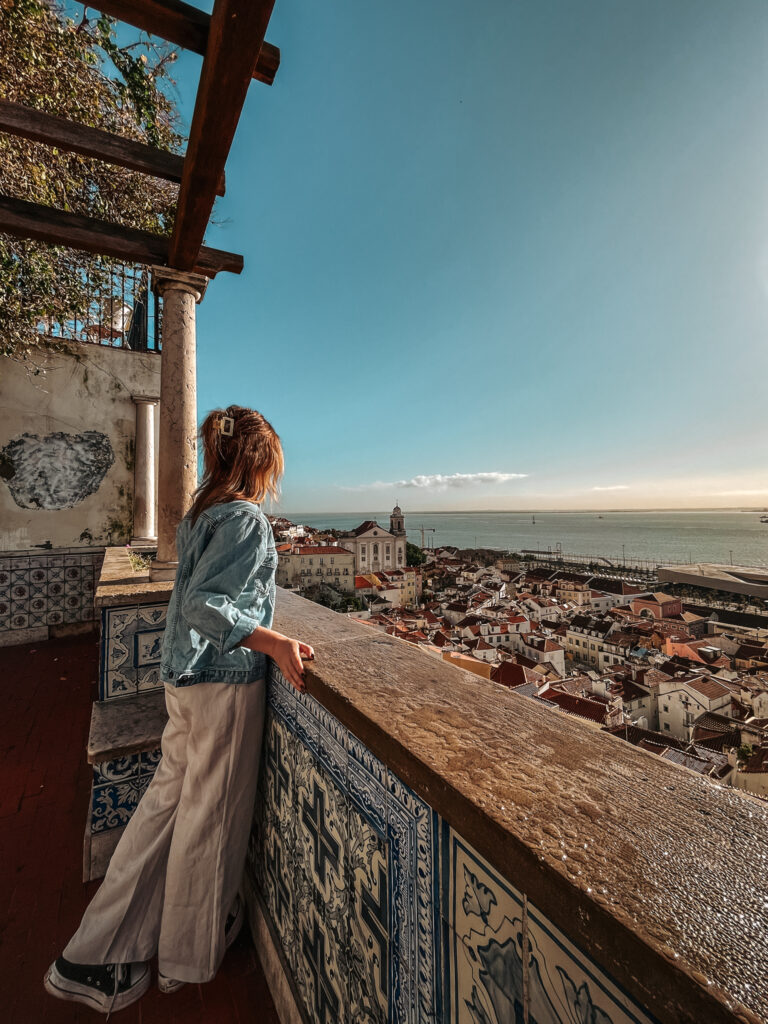
READ THESE POSTS BEFORE VISITING PORTUGAL!
LISBON GUIDES | 14 Things to Know Before Visiting Lisbon; How to make the best of your visit to Belém; 1 day, 3 castles: How to make the best of your day in Sintra; 5 tips for riding Tram 28 in Lisbon; Where to Stay in Lisbon?
LISBON PHOTOS | 30 amazing photos of Lisbon
THE REST OF PORTUGAL | 11 amazing things to do in Porto; 9 amazing things to do in Lagos
PIN FOR LATER

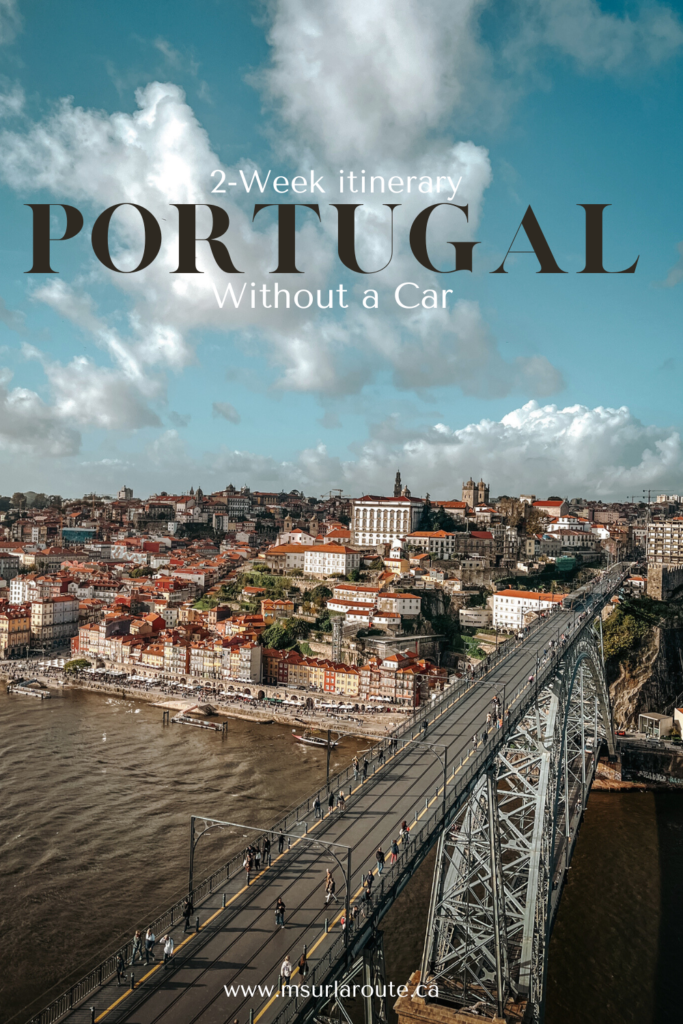

Follow me on Instagram!
Want to touch the southernmost point of mainland Canada? 👇🇨🇦
Then Point Pelee National Park needs to be on your summer list.
From epic sunsets and peaceful marsh boardwalks to migrating birds and butterflies, this park packs a lot into a small space.
In this quick guide:
📍 What to do
🗓️ Best time to visit
⛺ How to camp (hint: it involves oTENTiks)
🦋 And a few cool facts to impress your road trip buddy
Save this for later & tag someone who’d love to stand at the tip of Canada with you 🌊
🇫🇷 La version française de ce texte se trouve dans les commentaires.
#PointPeleeNationalPark #ExploreCanada #TravelOntario #ParksCanada #BucketListTrip #OntarioRoadTrip #NatureEscape #BirdingSeason #WanderOntario

Did you know Peterborough & the Trent-Severn Waterway made the New York Times list of 52 Places to Visit in 2025?
After a weekend exploring the area… I get it. Here’s what makes it one of Ontario’s best summer road trips ⬇️
🌿 Walk with alpacas at a local farm
🚤 Cruise through the world’s highest hydraulic lift lock
🍷 Sip sangria + eat wood-fired pizza at a vineyard
🛶 Visit the brand-new Canadian Canoe Museum
🌄 Hike through caves & forests at Warsaw Caves Conservation Area
🥧 Taste-test butter tarts in Hastings, Campbellford & Lakeside
The perfect Ontario getaway: nature, small towns, good food, and local gems everywhere you turn.
📍 Save this for your next summer road trip!
And tell me below — which stop are you adding to your bucket list?
🇫🇷 Saviez-vous que Peterborough et la voie navigable Trent-Severn figurent sur la liste des 52 destinations à visiter en 2025 selon le New York Times ?
Après un week-end à explorer la région… je comprends tellement pourquoi. Voici pourquoi c’est un road trip incontournable en Ontario cet été ⬇️
🌿 Marcher avec des alpagas dans une ferme locale
🚤 Naviguer sur la plus haute écluse hydraulique au monde
🍷 Boire de la sangria et déguster une pizza au feu de bois dans un vignoble
🛶 Visiter le Musée canadien du canot
🌄 Explorer les sentiers et les grottes du parc Warsaw Caves
🥧 Et bien sûr, faire le plein de tartes au beurre dans les charmants villages de Hastings, Campbellford et Lakeside
Le combo parfait : nature, petites villes, bouffe locale et histoire à chaque détour.
📍 Sauve ce guide pour ton prochain road trip d’été en Ontario !
Et dis-moi en commentaire : quelle activité te tente le plus ?
#discoveron
@ontariotravel and @kawarthas_northumberland
#PeterboroughOntario #TrentSevernWaterway #OntarioRoadTrip #ExploreOntario #SummerInOntario #HiddenGemsOntario #CanadianTravel

These Ontario spots understood the assignment… Saunas in the forest, hot tubs with a view, outdoor soaks under the stars, we’ve got it all!
Here are 6 places where the spa setup is reason enough to book the trip:
1. Aux Box (Huntsville)
2. The Baltic by Fort Tree House Co. (Minden)
3. Back Forty Glamping (Meaford)
4. Anupaya (Deep River)
5. Tiny Stays (Prince Edward County)
6. The June Motel (Beaver Valley)
Tag someone who owes you a spa weekend 💆♀️
🇫🇷 La version française de ce texte se trouve dans les commentaires
#OntarioStays #GlampingOntario #WeekendGetaway #SaunaVibes #HotTubGoals #OntarioSpas #TinyCabins #TravelOntario

I’m on a mission to put Belleville on the map for your Ontario summer adventures 🌞
This is way more than just a drive-by on the 401. Think: charming town vibes, scenic hikes, amazing food (I’m still dreaming about those perogies), and… turtles. 🐢
✨Here’s what I did (don’t forget to save the reel for the full breakdown!):
📍Explored downtown + coffee at Benji’s
🐢 Turtle Pond sanctuary
🥟 Lunch at Kafana (get the perogies!)
🌲 Hiked up Sager Tower (located in Quinte West just a short drive away)
🌮 Dinner at Pop-Ups on the Bay
🍓 Smoothies, wildlife, breweries & more on Day 2
🏖 Bonus: Presqu’ile for a beach day just 35 minutes away.
For this visit, I stayed at the Holiday Inn Express Belleville, perfectly located for all your Bay of Quinte adventures. 👌
Save this for your next summer roadtrip & tag someone who needs a mini escape!
🇫🇷 La version française de ce texte se trouve dans les commentaires
*made in partnership with Bay of Quinte Tourism*
#VisitBelleville #BayofQuinte #OntarioGetaways #HiddenGemsOntario #ExploreOntario #WeekendTripIdeas #MsurlarouteAdventures

Everyone visits Banff, but just an hour away, there’s also this. 👀
Grassi Lake in Kananaskis might just be one of the most underrated hikes in Alberta.
It’s short, it’s scenic, and the turquoise water? Totally unreal.
💦 Take the interpretive trail for waterfalls and forest views
⛰️ End at a lake so vibrant it looks photoshopped
So if you’re heading to the Rockies this summer, don’t sleep on Kananaskis.
Some of the best views are just off the radar.
💬 Been to Kananaskis or still on your list?
💾 Save this if you’re planning an Alberta trip!
🇫🇷 La version française est dans les commentaires! ⬇️
#GrassiLake #KananaskisCountry #AlbertaRoadTrip #HiddenGemsAlberta #ExploreKananaskis #HikingAlberta #BanffVsKananaskis #CanadianRockies #SummerInAlberta

